Nestled between the towering Maspero development on one side and the busy neighbourhood of Boulaq on the other, sits Wekalat El Balah, a flea market for clothes nearly always teeming with eager shoppers. In search of that perfect summer dress or smart shirt for work hidden somewhere in the endless racks of garments, Cairenes come to the market from all over the city, and more recently from all social classes. Known by some of its regular shoppers as just El Wekala, the used-clothes market has become synonymous with hidden treasures at bargain prices for those with the determination and stamina to look for hours. However, it has also become known for the most bizarre and specific custom-printed pieces of clothing from around the world that have ended up, somehow, at Cario’s El Wekala. El Wekala with its hidden treasures and curious printed t-shirts tells us of a wider story of shifting social classes, changing sensibilities, an increasing desire for sustainable consumption, and global commodity chains connecting Egypt to the rest of the world.
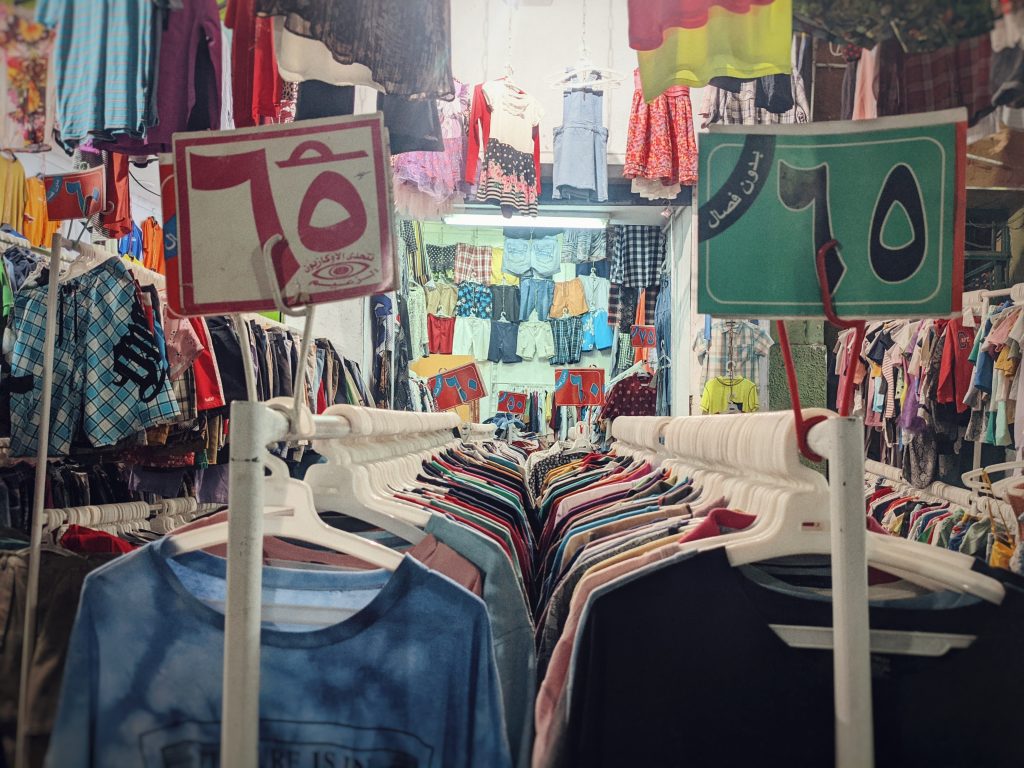
From Dates to Dior: The History of Wekalat El-Balah
As the working day for most comes to an end, El Wekala springs into life. Come four or five in the afternoon, men and women pouring out of the offices and printing press of the newspaper Al Ahram and other nearby workplaces have to compete with the throng of shoppers to get to the nearby Metro or catch a bus along the Nile corniche. The market straddles the neighbourhood of Boulaq along the 26th July Corridor and pierces deeper into the area through several of its small alleyways and roads. Hundreds of clothes racks on wheels and thousands of shoppers searching through racks piece by piece stretch out on to the roads and banish the passing microbuses, taxis, and cars to a tiny stretch of road, which they somehow impossibly squeeze through. El Wekala as we know it today has been imprinted on the public imaginary through tales of pristine and rare designer dresses being sold for pennies and films and books such as 1982’s Wekelat El-Balah. However, El Wekala and the wider area called Boulaq haven’t always been like this.
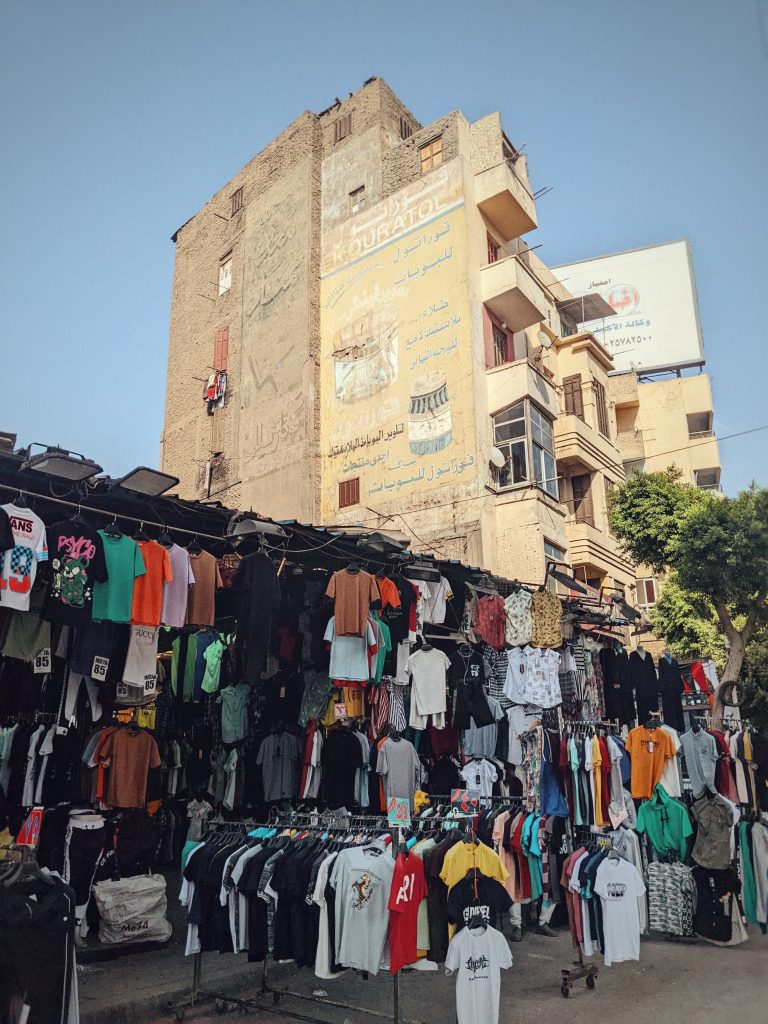
The wider area of Boulaq was originally Cairo’s first port and can be dated back to Ottoman rule in the 1400s under the reign of Sultan Barsbay. But aside from a few impressive mosques and buildings like the Sinan Pasha mosque, little survives from Boulaq’s early centuries. Instead, Boulaq now exists as a patchwork of modern developments and buildings from Khedive Ismail’s reimagining of central Cairo as a Europeanised cosmopolitan capital in the late 1800s. The origins of the name Boulaq are unclear, as it certainly isn’t Arabic and next to nothing exists in the historical record as to the reason and meaning of the name. However, some suggest that it comes from the French for beautiful lake, beau lac, as a nod to its pastoral and green origins before the city of Cairo subsumed it into the ever-expanding metropolis.
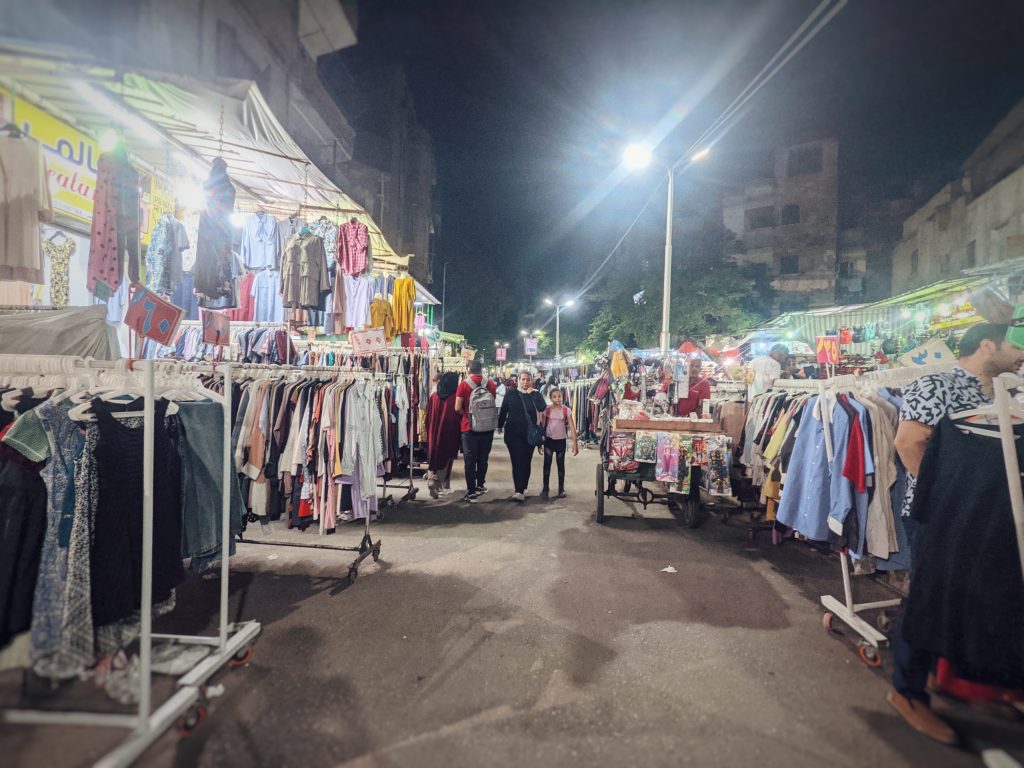
The name of the market itself, Wekalat El-Balah, translated as the Market of the Dates, references the origins of the market as a place for the wholesaling of dates, which grew as a natural consequence of the nearby port receiving ships from up and down the Nile. However, the Italian Jewish community in the 1930s started selling imported used clothes at the market, which quickly subsumed every part of the market and replaced the mostly Syrian, Lebanese and Palestinian shop owners. Although, with the internment of Italian residents by the occupying British forces during the Second World War and the later exodus of resident foreigners and members of the Jewish community following the 1952 revolution, El Wekala found new owners yet again. This time, El Wekala was to be run by mostly Upper Egyptians carrying on the sale of used imported clothes, who still run the market today.
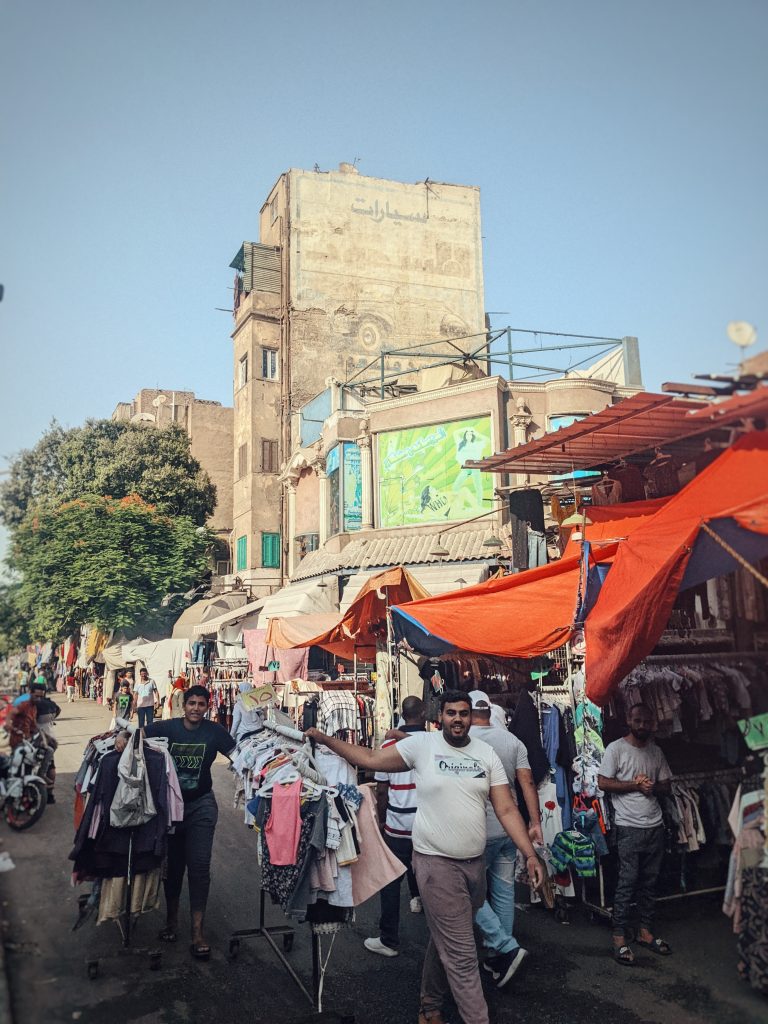
From dates to Dior, the sale of used clothes reflected the cosmopolitan aspirations of Cairenes at the time as Western fashions began to represent notions of modernity. This mirrored Cairo’s similar architectural makeover with the building of European-styled buildings happening towards the end of the nineteenth century. The prominence of the Italian Jewish community likewise reflects the then influence of resident foreigners, primarily of European descent, in the new economy of Egypt. This was helped in no small part by the unfair colonial capitulations that meant Europeans avoided much of the taxes and paperwork that their Egyptian competitors would have to deal with, which only fully ended in Egypt in 1949. Following on from this, the takeover of the market by Upper Egyptians reflects on the one hand the the sidelining of resident foreigners following the 1952 revolution and the migration of Upper Egyptians to Cairo. It also reflects, in particular, the collapse of Egypt’s Jewish population resulting from increasingly sour tensions following the creation of the state of Israel and Nakba in 1948.
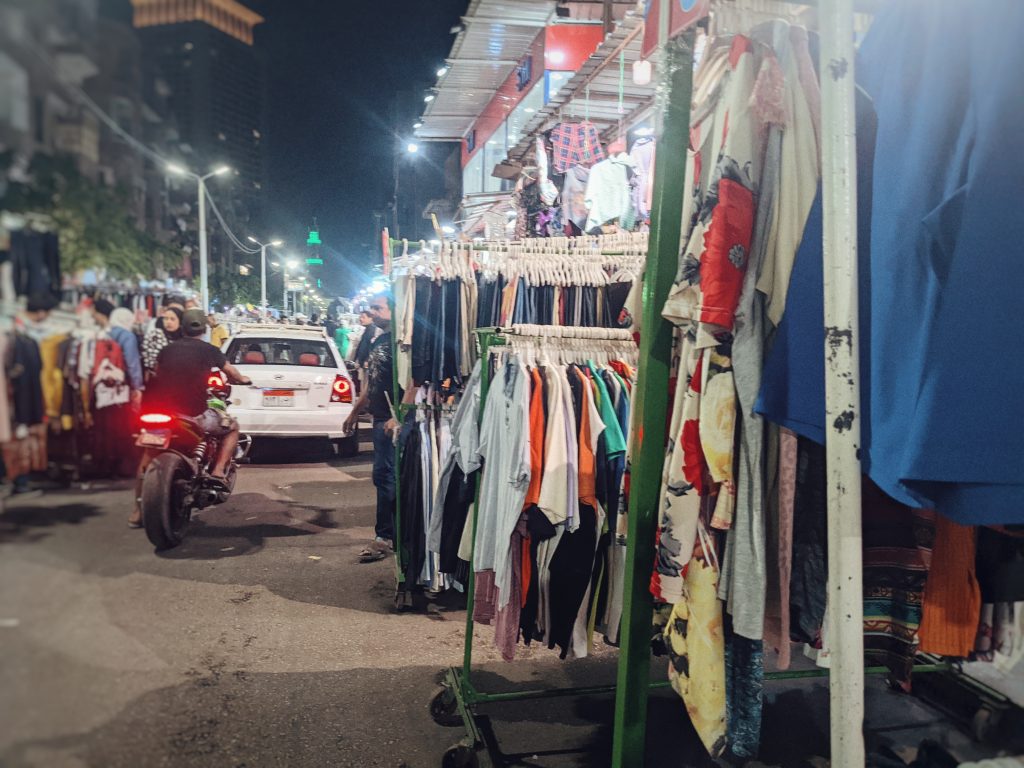
Fast Fashion and Global Commodity Chains
In a world of fast fashion, countries around the world can churn out tons of garments at a moment’s notice to satisfy trends that last only weeks. Garment factories in Vietnam, Bangladesh, China, Egypt, and other Global South countries have become, albeit low paying, important sources of income in emerging economies, particularly for women. In Egypt’s case, the country is Africa’s largest exporter of clothing and the garment sector accounts for 27% of Egypt’s total industrial output, according to the Egyptian General Authority for Investment and Free Zones. Garment factories in the Global South have become emblematic of the global division of labour, but also of commodity chains that return excess stock and used items back to the places they were produced.
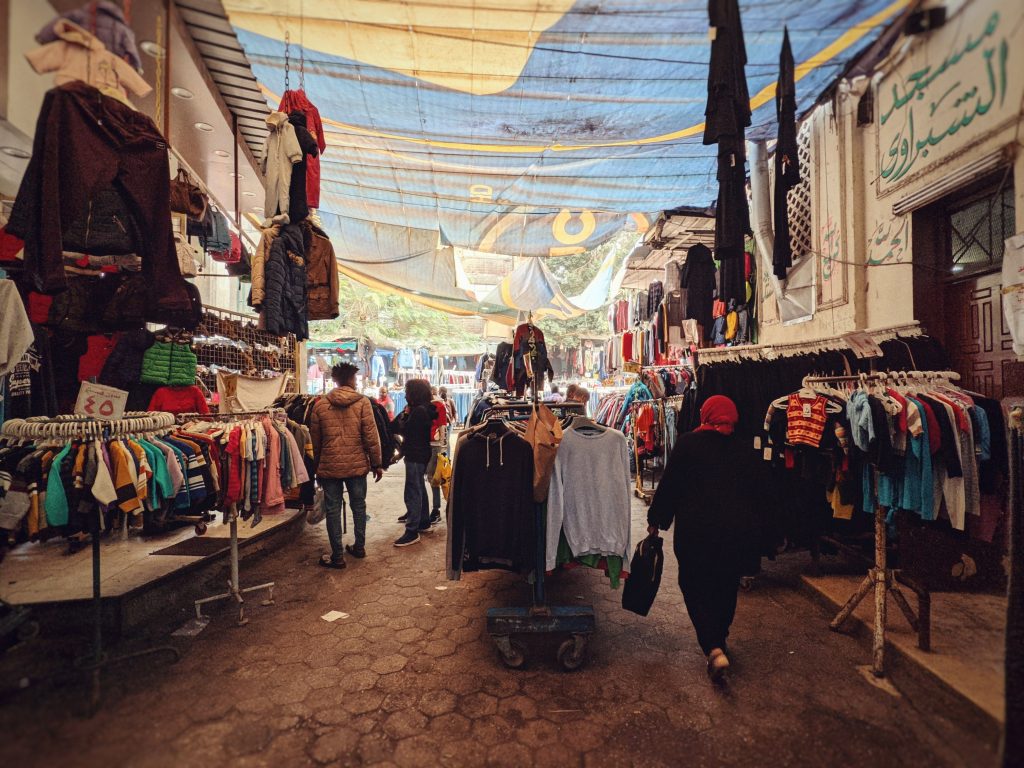
As a result of oversupply from fast fashion’s business model that accounts for masses of unsold products through cheap materials and exploitatively low wages for those producing the garments, secondary markets are found in the Global South to sell unsold stock. Additionally, with ever changing fashions and styles, particularly driven by social media, much of the clothing sold in the Global North is worn only a couple times in that many months, before being collected by a clothing bank. Excess stock and lightly used clothing, both primarily the result of the Global North’s over-reliance on fast fashion and other unsustainable consumption practices, make up the bulk of the pieces of clothing sold at Al Wekala. Brought by the ton by Egyptian businessmen, this excess and used imported clothing includes everything from expensive designer brands to cheap unbranded items and custom-made items for birthdays and hen parties.
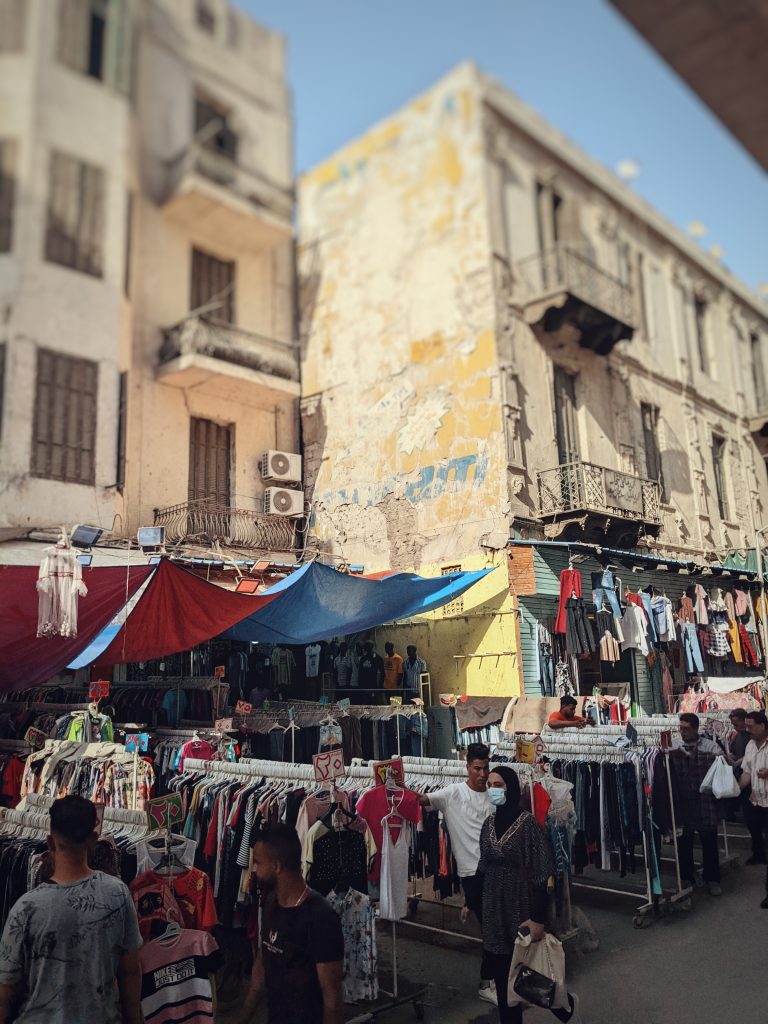
The Collapsing Middle Class and Changing Attitudes towards Used Clothing
The uncharitable term flea market supposedly references how used clothes and household items at a Parisian market in the 1800s would often contain fleas. However, this dismissive term has now found its way into the lexicon of trendsetters the world over. Mirroring this, the last few decades have seen the reclassification of used clothes as retro clothes, associating the practice of buying used clothes with a trendy subculture and fashion.
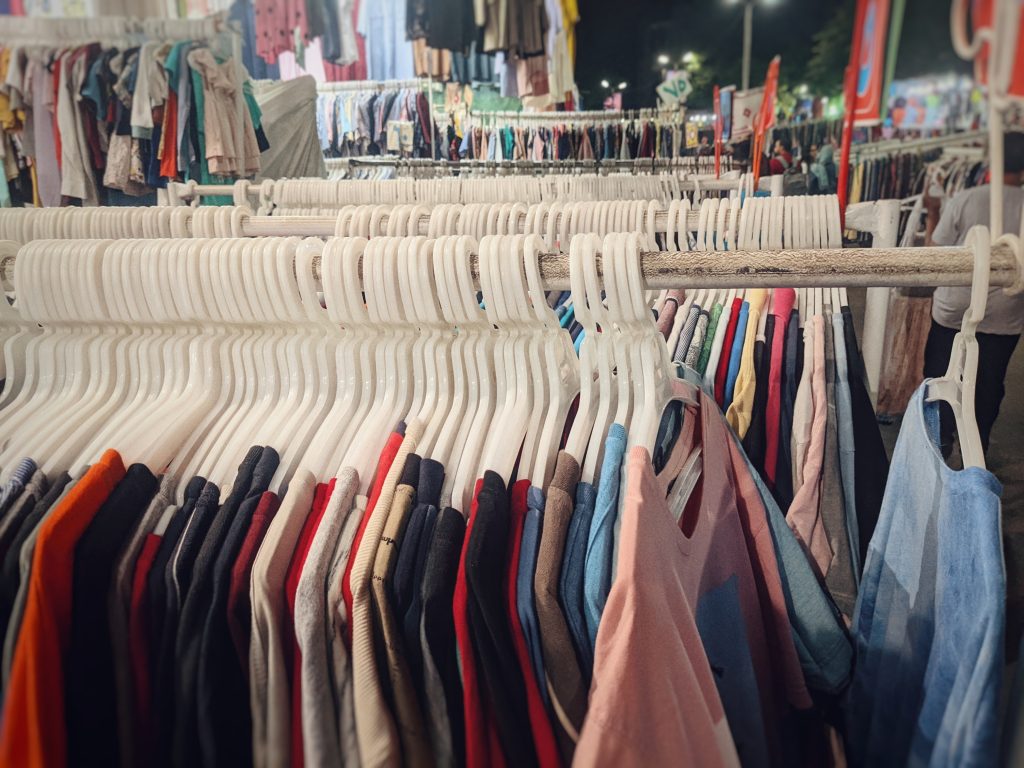
El Wekala like flea markets across the world have suddenly found themselves en vogue (excuse the pun) as an increasing concern for sustainable consumption has presented flea markets as the obvious solution to an obsession with fast fashion. Instead of being looked down open, flea markets and buying used clothes are increasingly being seen as the more responsible and respectable way to purchase clothes. Famously, Egyptian actress Sarrah Abdulrahman posted an Instagram post of her on the red carpet with a caption explaining that she brought the dress for 370 pounds from El Wekala.
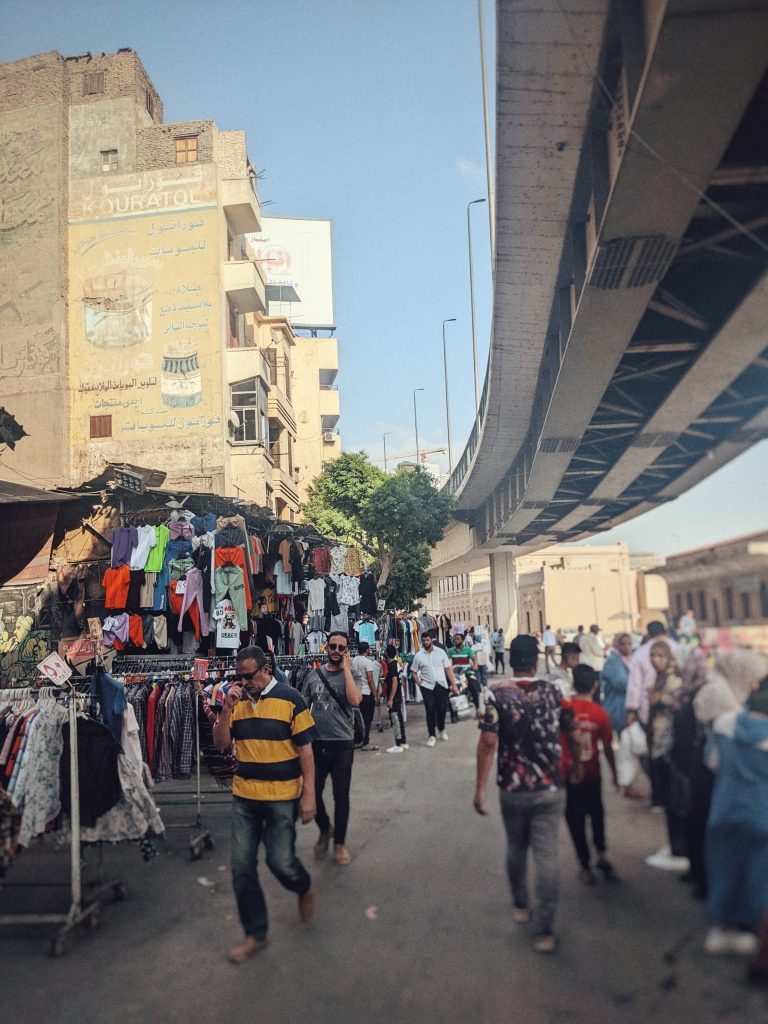
However, the new popularity of flea markets can be traced to back not only to an increased desire to be more sustainable and the retro trend, but the global decline of the middle classes. The world over, in an effort to make ends meet and to be able to still enjoy fashion amid stagnating or falling wages, people have been choosing to buy second hand clothes. As can be said for flea markets in Europe and America, young people from socio-economic backgrounds that usually would have shunned the idea of flea markets as uncouth now search through the racks for sustainable bargains.
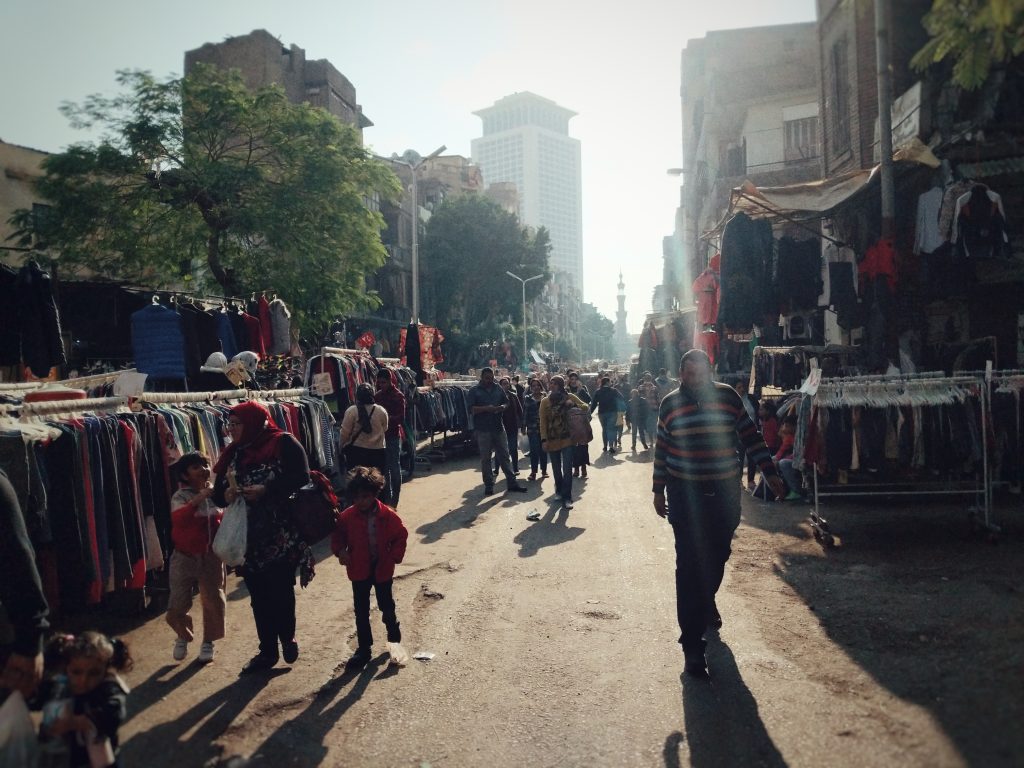
While seen by many as a relic of the past surviving through this new era of fast fashion and mass production, El Wekala and places like it are in many ways a model of the future. Digging through racks of clothing at El Wekala for that gem waiting to be discovered gives you the opportunity not just to find unique and beautiful items of clothing that you can be pretty confident your friends won’t also be wearing on a night out, but a more sustainable and also enjoyable way to shop.
WE SAID THIS: From Yasmine Kenawi To Osama Chabbi: Arab Stylists Making Waves In The Fashion Arena


